BISAC NAT010000 Ecology
BISAC NAT045050 Ecosystems & Habitats / Coastal Regions & Shorelines
BISAC NAT025000 Ecosystems & Habitats / Oceans & Seas
BISAC NAT045030 Ecosystems & Habitats / Polar Regions
BISAC SCI081000 Earth Sciences / Hydrology
BISAC SCI092000 Global Warming & Climate Change
BISAC SCI020000 Life Sciences / Ecology
BISAC SCI039000 Life Sciences / Marine Biology
BISAC SOC053000 Regional Studies
BISAC TEC060000 Marine & Naval
In order to remove the excessive nutrient salt at Port of Amagasaki, we have established the method to utilize the cycle of life: by cultivating seaweed at the port, removing shellfish from the upright sea walls, and turning them into compost. In cooperation with the local junior high school students, local citizens, experts, and administration, the junior high schools of Amagasaki provided the environmental study through this activity, based on the theme of “Cycle of Life”. In this report, we describe about the effects of this study. 1) Before the study, a survey showed that most of the students had bad impression toward Amagasaki Sea, such as “dirty” and “smelly”. However, after the study, the impression turned into better impression such as “fun” and “more familiar”. 2) In the Technology class, the students successfully cultivated more than 50 kinds of vegetation. As the students cooked and ate the vegetables and fruits they grew, the study also developed into “Food Education”-learning the connection between their health, environment, and food. 3) The students cooked using the oil extracted from the seeds of rape blossoms cultivated with their compost. Then they watched waste oil being refined and turned into bio diesel fuel, which activated car engine. Through such experiences, many students realized the cycle of life as “the life continues in different forms”, and the respect for life as well as developing their awareness to improve the natural environment.
environmental education, Sea, Amagasaki, JUNKAN.
I. Introduction
More than 100 years ago, the Sea of Amagasaki had been nurturing much “life” in beautiful rich seashore and tidal flats, and people were benefiting much from it. However, with industrial development, urging the constructions of landfill and concrete sea walls, the environment of the Sea of Amagasaki dramatically changed, making us no longer able to view the lush nature of the past.
Amagasaki City, located at the east end of Hyogo prefecture, north end of Bay of Osaka, has been a core city for development of Hanshin Industrial Area, while many of the residents were facing a lot of pollution issues. The Sea of Amagasaki and canals support the development of logistic operations of harbor, and average of 7,700 cargo ships run annually today. However, in regard to environment, such issues as occurring of red tides even during winter, no oxygen at the bottom of the Sea, and accumulation of sludge, make this area considered to be one of the worst water quality areas in Bay of Osaka.
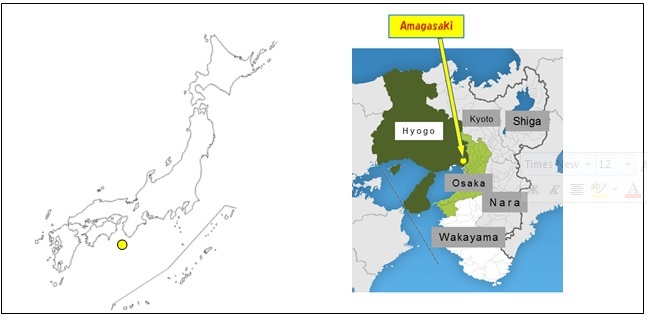
Fig.1. Location of study site.
In such situations, local junior high schools have incorporated learning activities based on the themes of “Cycle of Life” and “Environment” during engineering class and “integrated study period”. We also organized the Nature Club, mainly with Amagasaki junior high school students to conduct learning activities based around the Sea of Amagasaki. With the collaboration of Tokushima University that has long been researching about improving the environment of the Sea of Amagasaki, junior high school students, high school students, university students, citizens, experts, and local administration, have formulated “Amaumi Club (The Sea of Amagasaki Club)”, conducting “Education for Sustainable Development ” to learn with the local people.
The purposes are “to bring more environmental awareness and improve the local environment of our city”, and “ to develop the society where all living creatures can coexist”, nurturing the mind of nature and wildlife conservation among students, while creating and connecting to a recycling-oriented society, as well as purifying and improving the hydrophilic quality of the Sea of Amagasaki.
Particular activities include making of compost mainly by junior high school students, which is based from seaweed cultivation experiment implemented by the International EMECS center. The compost consists of cultivated and harvested seaweed and seashells collected from the sea walls. Then, students would use this compost to cultivate crops to make use in their food and everyday life. The main emphasis is for junior high school students to experience first hand based on the theme of “Cycle of Life (JYUNKAN)”, and nurture “attitude to think scientifically”, “attitude to respect other lives”, “great sensitivity and flexible creativity” and “power to move toward the dream”.
II. Purpose of activity
(Activity : The Nutrient Cycle Connecting the Sea and the Land of Amagasaki)
Due to excessive dissolution of nitrogen and phosphorus, the Sea of Amagasaki is generating massive amount of plankton. Amount of oxygen dissolved in the water decreases during high temperature summer season, killing plankton and generating massive red tide. In order to improve this condition, we have been cultivating seaweed which absorbs nitrogen and phosphorus and remove the source of contamination during December to March, as well as keeping all the records of seaweed growth every month, biological environment around the area, and water quality.
If all the conditions are met, seaweed grows up to 2 meters, providing comfortable habitat for aquatic life. In early April, we harvest seaweed and mix with fallen and dried leaves to make compost.
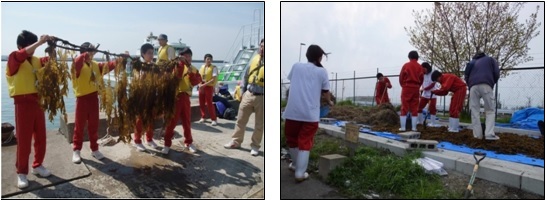
Fig.2. Photos of students harvesting seaweed and making compost
In July, we remove seashells from seawalls and mix it with smashed tree bark to make compost. By analyzing the compost to confirm content of nitrogen and phosphorus, and inspect any presence of toxic substance, we have confirmed that the compost is safe to use. We have applied this compost in the landfill (consisting of ash from incinerated garbage and remaining soil from demolished buildings) to cultivate the rape flower field in the area called “Nobi Nobi Park”.
The seeds are sowed in mid October. The members of “Amaumi Club” take turns regularly, to look after the field, like watering and removing weeds, until flowers come to full bloom in April. During the first two weeks of April, rape flowers bloom, and we harvest rapeseeds at the end of May. In 2015, we harvested 8 kg of rapeseeds from 400㎡ field and extracted approximately 2.5 liters of rapeseed oil. In 2016, cultivation area is expanded to 5 times and is expected even more harvest.
Extracted rapeseed oil is used in cooking, and waste oil is successfully used as biodiesel fuel (BDF) to run a car. [1] [2] [3]
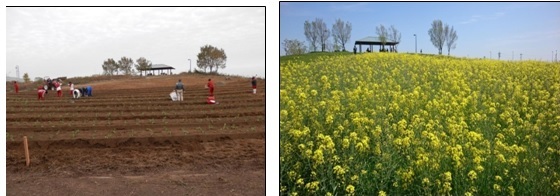
Fig.3. Photos of cultivating and planting rape flower and the field in full bloom
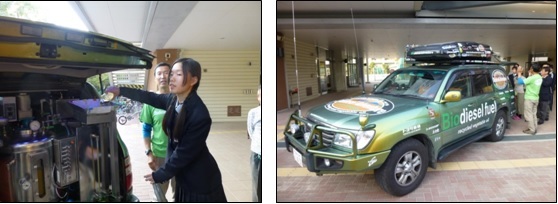
Fig.4. Photos of making refined biodiesel fuel (BDF) and running a car engine
After having harvested rape flowers, we cultivate the field in the middle of June to plant sunflowers and traditional vegetable of Amagasaki, Amaimo (potato). Sunflowers come in full bloom in the middle of August, and we can harvest sunflower seeds in the end of September and Amaimo by the end of October.
In relation to this, further research and development have been conducted on water purification system in collaboration with Nature Club, Tokushima University and Hyogo Prefecture based on the idea to utilize biological power like, “utilizing seashells’ purification function to remove murkiness of water”, “photosynthesis of algae providing oxygen in water”, “nourishing nutrients by planting reeds in artificial tideland”, and “creating artificial tide pool and generating aquatic life to purify water”. As the result, in 2012, based on these ideas, unprecedented water purification institution was constructed by Hyogo Prefecture at far end of Amagasaki canal. At this institution, old algae and shells are made into compost before turning into sludge to be used for growing sunflowers and rape flowers.
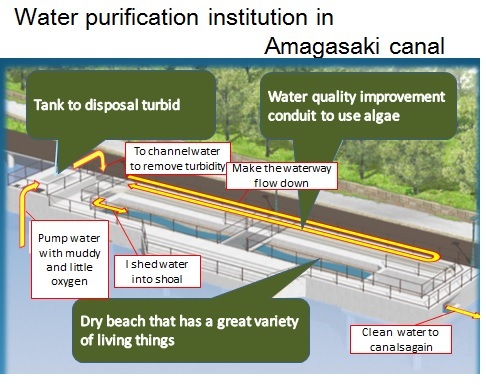
Fig. 5. Water purification institution in Amagasaki Canal
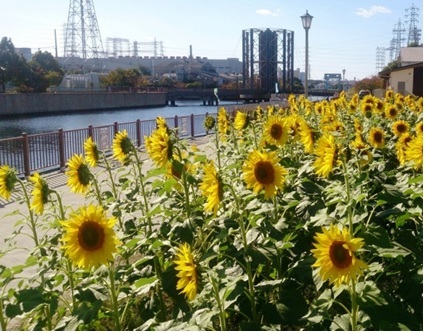
Fig. 6. In 2015, 130,000 sunflower seeds were harvested
At Seiryo Juior High School, students are learning to make compost mainly during engineer class as part of educational program since 6 years ago, placing collected algae and seashells into solar power generated garbage compost along with food waste (vegetable waste, used coffee, tea and green tea). Seashells are smashed and mixed with soil and compost and have been cultivating more than 50 kinds of crops and fruits. [4] [5]
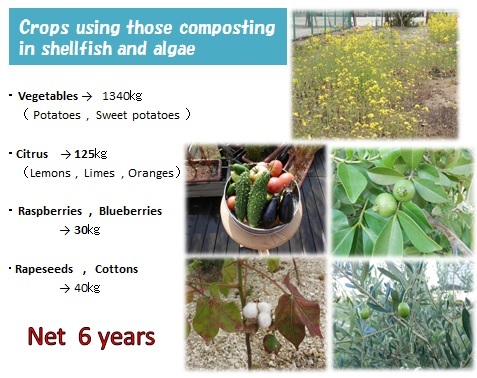
Fig. 7. Some of the crops cultivated at Seiryo Junior High School (Top right; rape flower,
Middle right: guavas, middle left: bitter gourd, tomato, cucumber, eggplant,Bottom right: olives, bottom left: cotton)
III. Results and discussion
A survey was conducted to those students who engaged in systematic education on environment based around the Sea of Amagasaki for 3 years from 2011 to 2013. It showed that before students engaged into the program, their impression of the Sea of Amagasaki was “dirty”, “dangerous”, “smelly”, “never want to come close”, “scary”, and “no knowledge at all”−no interest nor familiarity were prominent. However, after students enrolled in the program, the impression changed to their desires, like “even the present water is not all clean, I want to change our sea into a beautiful place”, “I want ocean fish to live in cleaner water”, “I feel I made circle of friends through this program”, “I want to clean the environment with our own power where humans destroyed in the past”.
This shows that students realized the cause of contamination and gained the power to resolve the problems through their experience by minimizing the effect on environment, but utilizing it. There were other effects listed as below:
- Enhanced communication skill and ability to accept each other. The students were able to establish better interpersonal relationship.
- By receiving good reputation for their activities, many students developed higher self-esteem and self-affirmation.
- Improved attitude to respect materials and resources.
- Increased number of students participating in activities to contribute to the local community.
Many students became aware of how their daily life is closely connected to the sea environment and showed interest in “coexisting with nature”, “city’s history and culture”, “city’s disaster prevention” that some students were able to present their own research. Also, some students continued to participate in the environmental activities around the Sea of Amagasaki even after graduating junior high schools. This proves that the environment education of the Sea of Amagasaki generated many interests for students and led to various learning. The students realized that their dream could be manifested when they share ideas with like-minded friends and collaborate, and they are striving to live with new dreams every day.
Some specific examples include such activities as maintaining rape flower field at landfill’s “Nobi Nobi Park” and horse therapy experience in December 2014. In 2015 October, many people gathered around beach and canals and shared excitement at Canal Festival. In 2016 April, the rape flowers came into full bloom providing beautiful flower scenery to many.
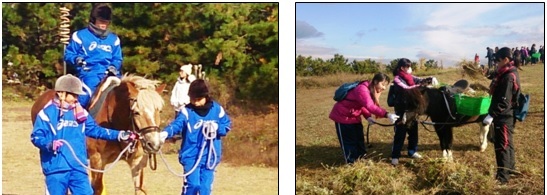
Fig. 8. Horse therapy at Nobi Nobi Park along the beach. Approximately 250 people including
kids and adults came this day to enjoy removing weeds in the fields and horseback riding.
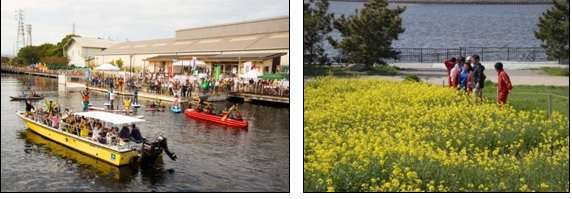
Fig.9. Canal Festival at Amagasaki water canal and rape flower field expected to bring many
people to enjoy the view every year.
IV. Conclusion
“The Sea of Amagasaki giving us wisdom”, “The Sea of Amagasaki making us think about the way to live”, “The Sea of Amagasaki teaching us that the form of life continues to be connected even if its form is ever changing.” We would like to appeal that this environmental education of the Sea of Amagasaki, which supports lives of Amagasaki people, and provides us with new learning and insights even today, will gain the status as a part of school education system in the future.
V. Acknowledgements
This activity receives cooperation support of the Amagasaki port administration Office of Hyogo and is performed and writes down gratitude here.
1. T.Nakanishi, Y.Kozuki, N.Bando, H.Takahashi, H.Ueshima, “Study of environmental restoration technologies for the canal in Amagasaki port experiment on current control and water purification use Amagasaki lock gate ”.Journal of Ja-pan Society of Civil Engineering in the Ocean,23,757-762 ,2007. (in Japanese with English abstract)
2. R.Yamanaka, Y.Kozuki, Y. Mori, N.Bando, H.Takahashi, H.Ueshima,“Field study on new aeration techniques for water environment restoration in the Amagasaki canal”. Journal of Japan Society of Civil Engineering(Coastal Engi-neering)55,1246-1250, 2008. (in Japanese with English abstract)
3. Y.Kozuki, T.Nakanisi, C.Tara, H.Nshimura, N.Yamaguchi, K.Iwaki, and Y.Yama-naka, “Periphyton growth on concrete containing amino acid in southern Osaka Bay”,proceedings of Civil Engineering in the Ocean,26,111-16, 2010. (in Japanese with English abstract)
4. J. C.Lorenzen,“Carbon/chlorophyll rerationship in an upwelling area”,Limnol.Oceanogr,13,pp.202-204, 1968.
5. P,Arnow, J.J,Oleson, J.Williams, “The effect of Arginine on the nutrition of Chlorella Vulgaris” , American Journal of Botany,40,10-15, 1953.







